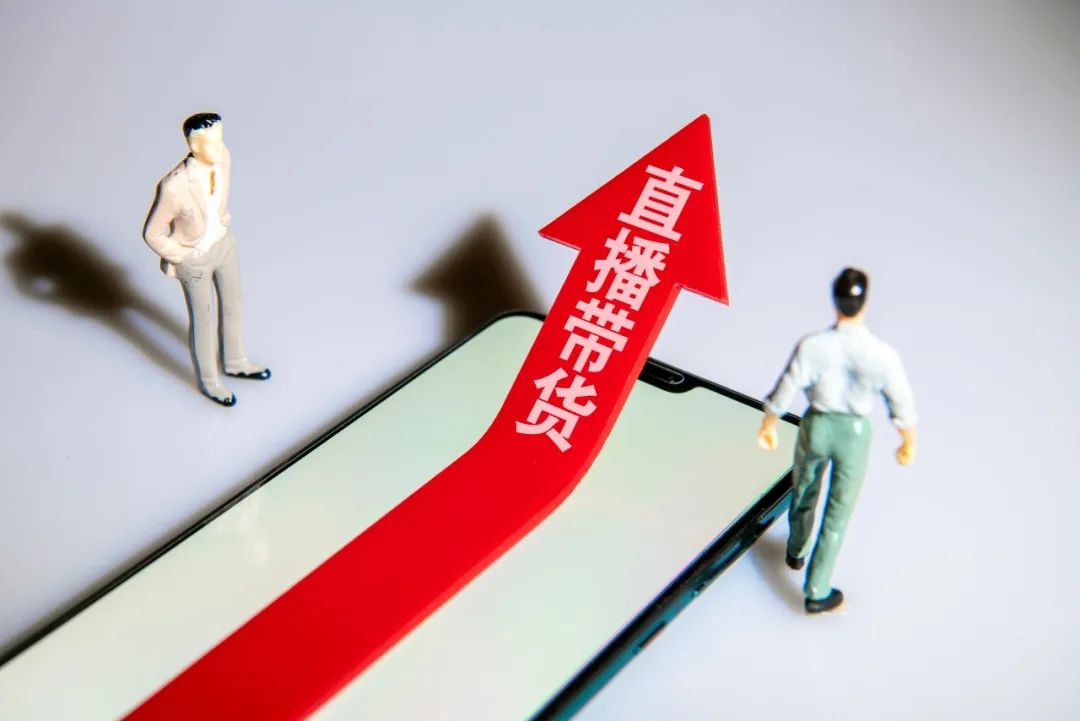E-commerce intermediaries being phased out
![]() 11/11 2024
11/11 2024
![]() 457
457

The essence-focused Double 11 shopping festival once again fueled growth for e-commerce platforms and merchants. However, e-commerce agency companies, which were prominent in previous years, have fallen silent.
Brands are strengthening their e-commerce operations, and platforms have a demand for deeper business engagement. As intermediaries in the e-commerce market, these "water sellers" are destined to be marginalized. This is an inevitable trend in the maturing of e-commerce. After all, from the beginning, e-commerce aimed to eliminate intermediaries. Now, this trend is simply being pushed further.
Ice and Fire in E-commerce
The e-commerce market remains heated. Latest data shows that in the first three quarters of this year, China's online retail sales reached 10.9 trillion yuan, an increase of 8.6%; among them, online retail sales of physical goods amounted to 9.1 trillion yuan, up 7.9%. The fiercely competitive 2024 Double 11 shopping festival, due to the return of value for e-commerce platforms with more discounts and fewer gimmicks, has once again gained the approval of most consumers, with continuous battle reports. However, similar to the "squeezing growth" and "structural prosperity" faced by most industries in the stock era, in the e-commerce market, platforms and top merchants continue to rise; while intermediaries, which originally served as connectors, are facing increasing pressure. The excitement belongs to them, but not to me. In previous years, e-commerce service providers led by e-commerce agencies would also release relevant battle reports. This year, most of them have remained relatively silent. In fact, the current silence in this sector is just a microcosm. The "Nokia moment" for e-commerce service providers has actually already arrived.

Over 20 years ago, e-commerce began to take off, with the penetration rate of e-commerce platforms like Taobao, Tmall, and JD.com gradually increasing. More and more brands started to delve into e-commerce channels. Merchants lacked professional e-commerce operation capabilities, giving rise to the e-commerce agency industry, evolving from initially "opening online stores for brands" to deepening business engagement in the e-commerce service market. Meanwhile, e-commerce platforms' desire for precise traffic also spurred platforms focused on content and discounts, such as seeding and shopping guides, to develop their business models by redirecting traffic. Platforms like Shmehao and Fanli.com successfully emerged from the competition. They can be collectively referred to as "water sellers" in the e-commerce market. This is a nearly brand-new industry born out of the rise of e-commerce channels, with founders mainly from the post-80s generation. With the rapid development of the e-commerce market, e-commerce agencies and traffic redirection platforms achieved rapid growth, with a wave of IPOs erupting around 2019-2021. E-commerce agencies such as Baozun, Larena, Roeve, OneNetOneCreate, Kanpure, and Qingmu Technology, as well as traffic redirection platforms like Shmehao and Fanli Technology, successively listed on the A-share market. The brightest fireworks always fall first. No one expected that within just one or two years, e-commerce water sellers would plummet from their peak to their nadir. E-commerce agencies have collectively fallen into a business crisis, with performance declines and even losses becoming the norm. Currently, almost only Roeve (003010.SZ) maintains a growth trend. In the first three quarters of 2024, Shmehao's (300785.SZ) operating revenue was 1.012 billion yuan, up 5.54% year-on-year, with a net profit attributable to shareholders of 3.8046 million yuan, down 72.94% year-on-year.

Fanli Technology (600228.SH) is already in the throes of internal and external troubles. After being backdoor listed through Changjiu Biochemical in 2021, the company's performance commitment completion rate for 2021-2023 was only 40.57%; at the same time, its core subsidiary's basic account was frozen due to cooperation with the investigation of a P2P case, which will also affect business stability to a certain extent. In 2023, the company's operating revenue was 302 million yuan, down 40.77% year-on-year, with a net profit attributable to shareholders of 25.4352 million yuan, down 62.61% year-on-year. In the first three quarters of this year, operating revenue and net profit attributable to shareholders were 193 million yuan and -3.2836 million yuan, respectively.
Continuously eliminating intermediaries
In 2003, China's first true e-commerce platform, Taobao, was established. Subsequently, JD.com entered the market, and Alibaba launched Tmall, gradually ushering China's retail market into the e-commerce era. The fundamental reason why e-commerce has thrived in the past 20+ years is that it has eliminated many intermediaries. In the traditional trade era, products left the factory, passed through general distributors, multi-layer distributors, and offline stores before reaching consumers. In the e-commerce era, it's as if Taobao, Tmall, or JD.com opened an ultra-large virtual mall where all merchants can sell their products. Among them, e-commerce's self-operated business is equivalent to opening a supermarket where the platform purchases goods and uniformly sells them to consumers. In the early days, the main driving force behind the e-commerce market's operation was consumer habits. Platforms attracted merchants to settle in, continuously attracting consumers through product supply and user subsidies, fostering e-commerce consumption habits in nearly a billion consumers to attract more merchants to settle in, ultimately forming a positive cycle.

Later, with the rise of new internet platforms like short videos, the mindset of monetizing traffic gave birth to a new social e-commerce model: live streaming sales. For a few years, the main driving force behind the e-commerce market shifted from consumer habits to traffic. Whether it was live streaming sales on Douyin or Kuaishou, or Pinduoduo's "cash in on discounts" strategy, they were all based on monetizing traffic through social trust. Compared to traditional e-commerce, social e-commerce also compresses the middle links of the e-commerce transaction chain.
Pinduoduo focuses on the first half, turning ordinary people into users; Douyin and Kuaishou focus more on the latter half, converting traffic into consumption. With the support of traffic, the decision-making cycle for e-commerce transactions has shortened, optimizing the relatively cumbersome middle links of traditional e-commerce. Currently, as the e-commerce market continues to iterate and upgrade, the industry's main driving force is quietly transitioning to service upgrades based on technology. Behind more precise matches, simpler links, and more efficient services are increasingly crucial roles played by systems such as AI, supply chains, and digital e-commerce logistics. The M2C model that has emerged in the e-commerce market in recent years is carrying out the principle of "eliminating intermediaries" to the extreme.
Even after entering the e-commerce era, if manufacturers and brands want to achieve sales, they still need intermediary service providers such as e-commerce distributors, e-commerce agencies, and traffic redirection platforms; although self-operated e-commerce seems efficient, from procurement to sales, it is also relatively cumbersome and can even be seen as the centralized internetization of traditional distribution channels. However, platforms like Taobao's Taobao Factory and Pinduoduo's Temu semi-managed business achieve a simpler and more efficient e-commerce structure than traditional B2C and self-operated models through embedded complementary advantages. This dealt a fatal blow to e-commerce water sellers. After all, for merchants, there is no longer a need for them to possess high e-commerce operation capabilities. Traffic, operations, warehousing, and logistics can be largely handled by the platform. For platforms, excessive traffic investment and user subsidies do not solve fundamental problems. What consumers want are simply better products and more favorable prices; merchants' goals are also clear: sell goods, make a profit, and achieve long-term development. To maintain balance in the long run, there is hardly a better solution. Eliminating intermediaries who earn price differences is the most direct solution.

Way Out
Around 2019, the e-commerce market was at the end of its previous golden era, and e-commerce agencies were also at their peak, queuing up collectively for IPOs. The crisis was already evident at that time and clearly shown in their financial reports – dependence on e-commerce platforms and big brands. For example, Baozun (09991.HK) and Larena's dependence on e-commerce platforms, and OneNetOneCreate's (300792.SZ) dependence on major client Pechoin, etc. However, the doomsday predictions of that era were not taken seriously by the industry. Or perhaps, continuous growth and the excitement of waiting to go public overshadowed these hidden crises. Later, as predicted, things developed just as anticipated back then. Initially, merchants strengthened their e-commerce channel operation capabilities. Just a few years later, e-commerce channels had become standard in many industries. The good days for e-commerce agencies were over.
Later, e-commerce platforms strengthened their service capabilities, leading brands to directly face consumers. This further squeezed the living space of e-commerce intermediaries. By the time the crisis truly struck, the best opportunity for transformation had often passed. Therefore, among e-commerce agencies and traffic redirection platforms, those that had thrived in the past lagged behind in transformation and achieved poorer results. Currently, there is almost only one mainstream transformation direction for e-commerce agencies: becoming brand merchants. Since they can't compete, they join in, making their own brands if they can't become platforms. Larena (605136.SH) has launched food brands like Xunwei Archives, tea brands like Xuhuan, and skincare brands like Yurongchu and Meiyitang, while Roeve has the household cleaning and personal care brand Blooming Home. The former industry leader, Baozun, was even more direct, acquiring GAP's Greater China business, adding brand management services in addition to e-commerce services. However, GAP, which is still unprofitable, is like adding insult to injury for Baozun, which has suffered losses for consecutive years. Among the industrial transformations of e-commerce agencies, only Roeve's Blooming Home can be considered a basic success. Currently, Roeve is the only one in the industry showing a growth trend.

As for those e-commerce service companies that have yet to transform, there is little hope for unexpected surprises awaiting them. In the midst of internal and external troubles, Fanli.com has hardly made any moves to optimize its business. It currently mainly achieves minimal profits through its over 200 million existing users and existing business models. Shmehao is more "comprehensive." On the one hand, it gradually replaces PGC, GUC, etc., through content AI to reduce costs. In the first half of 2024, nearly 40% of the content on the Shmehao platform was generated by AI. At the same time, it deepens its business. Previously, Shmehao's main business model was to direct e-commerce traffic generated by its content to e-commerce platforms, earning income and profits through commissions; now, it not only has content but also brand marketing business and even forms its MCN to cultivate anchors for live streaming sales. However, for now, the effect of this all-out war is unclear. For Auntie Zhang (ZDM), there seems to be no better choice than to move forward or backward.




